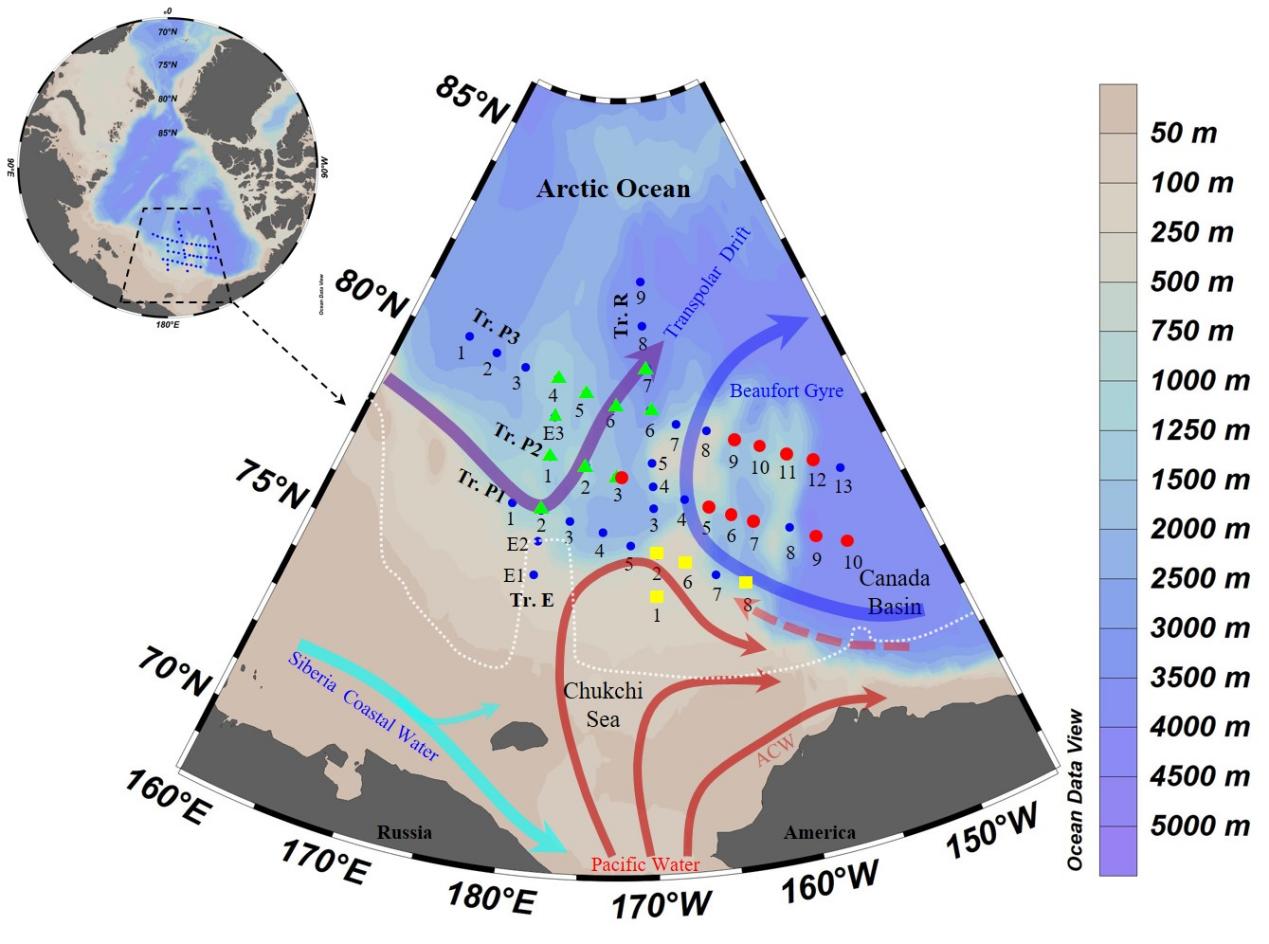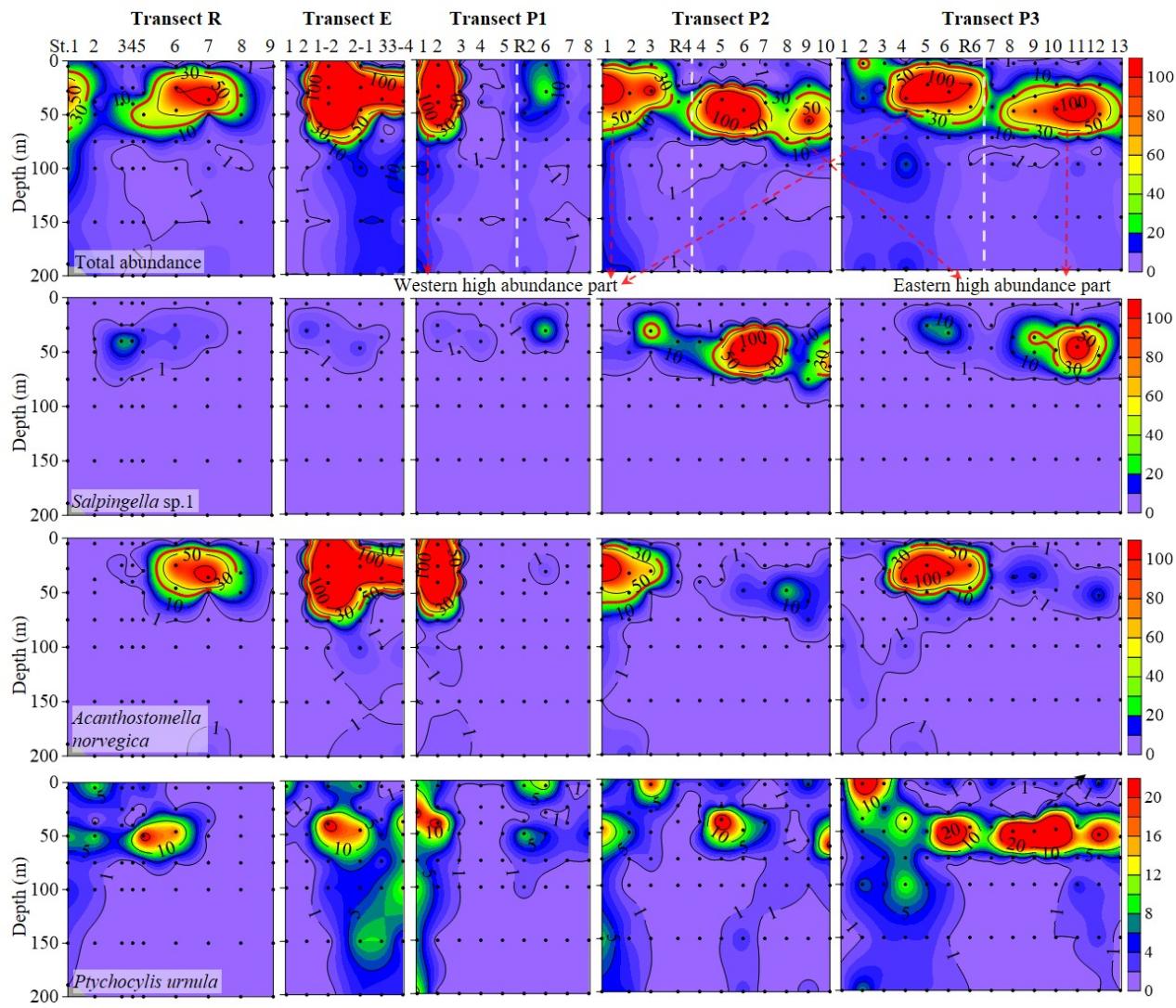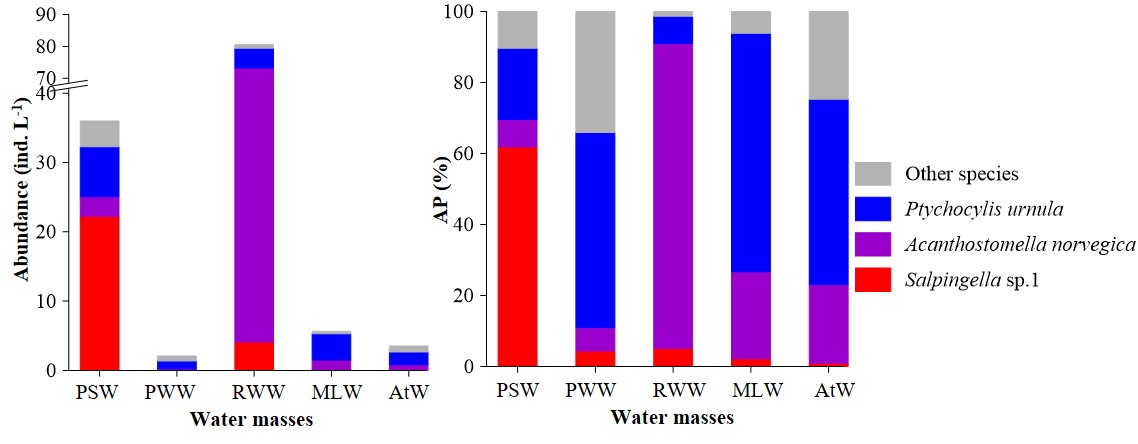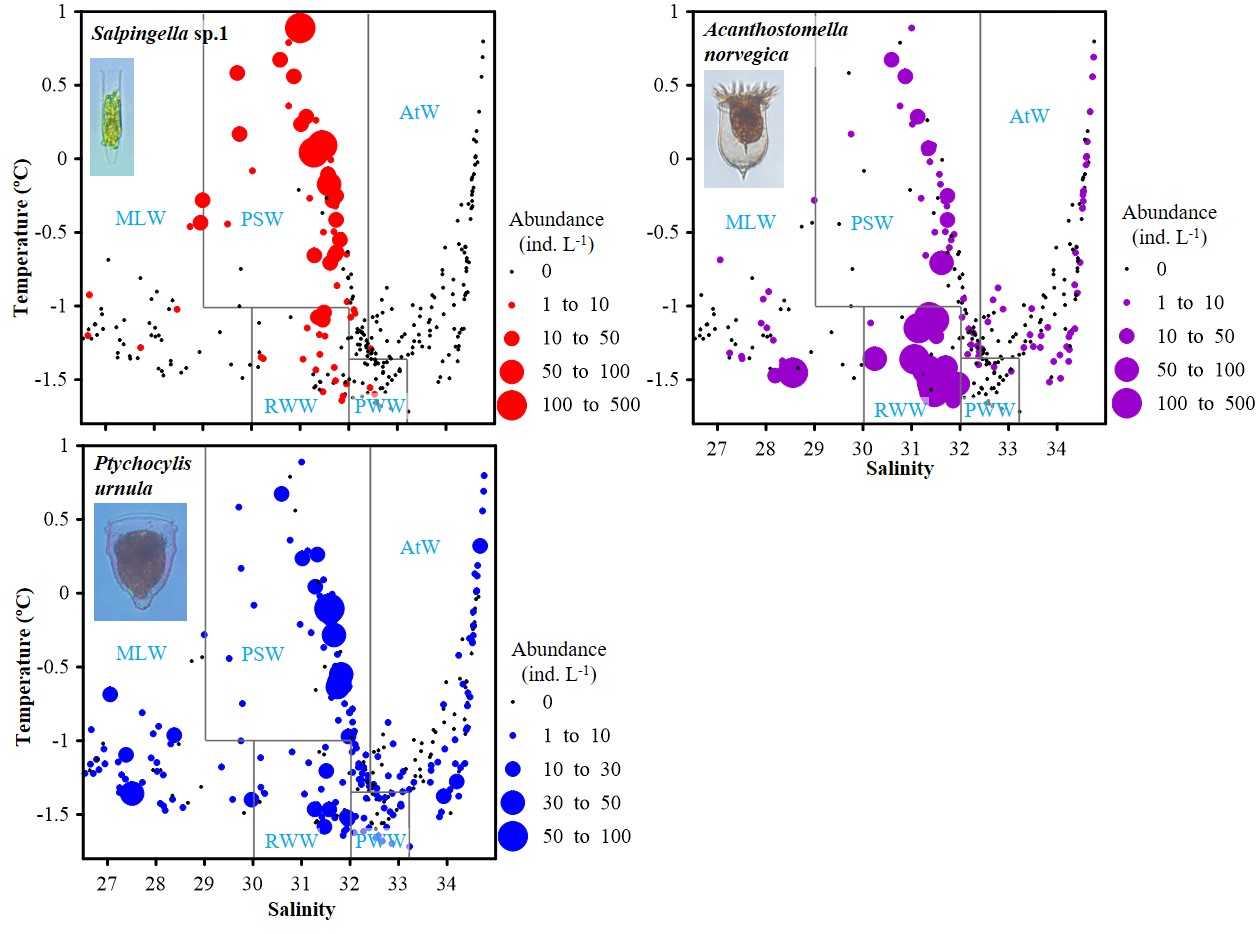Tintinnids (Ciliophora: Spirotrichea: Choreotrichia) are planktonic ciliates with loricae around their body. They play an important role in material circulation and energy flow from the microbial food web to traditional food chain. Because of their high abundance, identifiable morphology and outer lorica protection, tintinnid species have been suggested to be favourable bioindicators of various oceanographic conditions.
The Arctic Ocean is one of the most sensitive region to global warming, and contains a complex water masses. Water mass owned unique hydrographic features and zooplankton communities. However, there was no data about tintinnid community structure variations in different water masses of the Arctic Basin.
Dr. WANG Chaofeng of the research team led by Prof. ZHANG Wuchang at Institute of Oceanology, Chinese Academy of Sciences (IOCAS), investigated the tintinnid community structure variations in different water masses of the Arctic Basin and found that Pacific-origin tintinnid invaded in the Canada Basin, revealing a rapid borealization progress of Arctic microzooplankton.
The study was published in Frontiers in Marine Science.
Researchers found that five water masses occurred in the Arctic Basin, and each of them had unique tintinnid community structure. Temperature-salinity-plankton diagrams showed that these species might be regarded as indicator species of each water masses.
In addition, through high abundance distribution area of Salpingella sp.1 and A. norvegica, researchers found approximate boundary of the Beaufort Gyre and Transpolar Drift.
Another important finding of this study is that Pacific-origin species Salpingella sp.1 had much higher abundance than Arctic endemic species P. urnula in the Pacific Summer Water (PSW) of the Canada Basin. Increasing in PSW thickness and average temperature (compared to 2016) might be the reason for Salpingella sp.1 high abundance in the PSW in the year 2020.
The study was supported by the funding from the China Postdoctoral Science Foundation, the National Key Research and Development Program of China, the Applied Research Project for Postdoctoral in Qingdao, and the National Natural Science Foundation of China.

Fig. 1 Transects (Tr.) and survey stations in the Arctic Ocean. White dotted line delimits the ice edge, where covered by sea ice in the Arctic Ocean on 1 August 2020; Arrows showed currents following Aksenov et al. (2016), Hunt et al. (2016), Li et al. (2019) and Zhong et al. (2019); ACW, Alaskan Coastal Water. Red circles, stations of Salpingella sp.1 occurred in high abundance (≥ 30 ind. L-1); Green triangle, stations of Acanthostomella norvegica occurred in high abundance; Yellow square, stations where neritic species occurred.

Fig. 2 Vertical distribution of total and abundant tintinnid abundance (ind. L-1) from surface to 200 m

Fig. 3 Average abundance and abundance proportion (AP) of abundant tintinnids in different water masses. PSW, Pacific Summer Water; PWW, Pacific Winter Water; RWW, Remnant Winter Water; MLW, Mixed Layer Water; AtW, Atlantic-origin Water.

Fig. 4 Temperature-salinity-plankton diagrams for three abundant tintinnids in all water mass
Wang, C.F., et al. Planktonic tintinnid community structure variations in different water masses of the Arctic Basin. Frontiers in Marine Science, 2022, 8, 775653.
ZHANG Wuchang
Institute of Oceanology
E-mail: wuchangzhang@qdio.ac.cn
(Editor: ZHANG Yiyi)
|
|

Address: 7 Nanhai Road, Qingdao, Shandong 266071, China
Tel: 86-532-82898902 Fax: 86-532-82898612 E-mail: iocas@qdio.ac.cn


